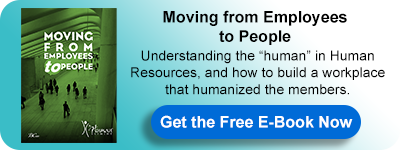Humanizing the Organization: Tools and Tips
Human resources must revitalize their approach towards their employees in order to ensure retention. The Human Element (THE) is a systematic and scientific approach for improving how people work together, leading to the more outstanding accomplishment of goals and better individual, team, and organizational performance.
The Human Element aims to increase openness and honesty in organizations and reduce unproductive defensive behavior to achieve better business results. The Human Element approach deals with root causes rather than superficial behaviors. Therefore, The Human Element provides us with some valuable insight into the area of humanizing organizations.
1. Raising Self-Awareness
Employees leave managers, not necessarily companies. Therefore, the management style of managers at any level has a significant impact on the retention, productivity, and satisfaction of employees. Hence, management needs to have enough courage to ask themselves whether they positively or negatively impact employees.
It’s hard for a manager to understand their impact on others without digging into their beliefs: how they view themselves, their competence, and their significance. Their view of themselves will indeed reflect on others. If someone views themselves as incompetent, they will either view others the same, exercise high control to compensate for their views of themselves or lack the courage to admit others’ competence. Therefore, Self-Awareness starts from within by observing one’s thoughts and belief about oneself. They might then seek some leadership and managerial assessments to gain insight into their style. This is followed by feedback from peers and own team.
Adjustment to unproductive and ineffective managerial behaviors will definitely work wonders to employee engagement, well-being, and satisfaction. If managers care enough about their employees, they will adjust their management style.
2. Building Openness
According to The Human Element (THE), openness creates an environment where people openly exchange thoughts, beliefs, ideas, and feedback. It’s mainly about building trust that allows people to share their deep feelings and thoughts. Creating openness will enable employees to share what’s going on with them, whether professionally ranging from their views of their tasks, how interested they feel, to how they feel about their colleagues, the organization, and even their managers.
Trust and openness allow employees to voice their feedback to their managers. Managers seeking to work on their management style need to seek employees’ feedback. How is that possible without building that trust, which encourages openness with their employees? Thus, managers need to leave their egos at the door to create transparency—employees, on the other hand, who feel that openness with their managers can even voice personal stuff. Hence, allowing their managers some window into their preferences and a glimpse of help into how they can support during turbulent times.
3. Inclusion
Promoting well-being cannot occur without inclusion, which creates a safe environment where no one is left out. It’s about a workforce that supports, tolerates, and encourages diversity of ethnicities, religions, races, cultures, preferences, or even personal status. No one should feel left out or bullied just because they are different Inclusion efforts are built on self-awareness initiatives that are followed by promoting self-acceptance. If I accept myself, I am likely to accept others. Hence, inclusion fosters self-awareness, self-acceptance, empathy as we empathize with others and their differences.
1The Human Element, Part One, Cornerstone Participant Guide, BCon (Business Consultants, Inc)
For more about this topic, download our latest book "Moving From Employees to People" for FREE:
